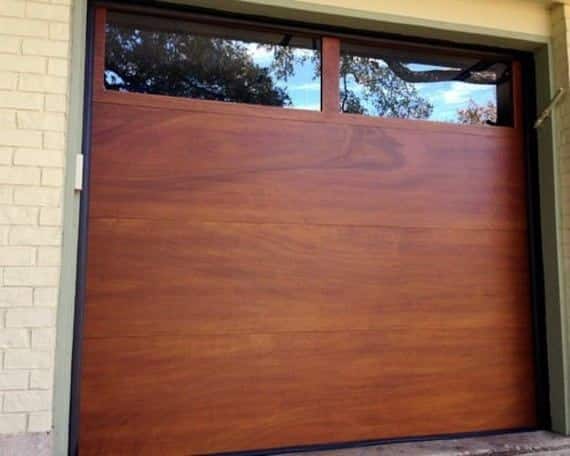In the world of home improvement, homeowners are constantly looking for ways to upgrade and maintain their properties. One common area that requires attention is the windows, specifically the decision to replace a single panel. Single panel replacement can be attractive for many homeowners, offering a cost-effective alternative to complete window replacement.
Sacramento, California’s capital city, is known as the ‘City of Trees’ for its lush greenery and tree-lined streets. With over 500,000 residents, Sacramento offers a unique blend of history, culture, and modern amenities. As a growing metropolitan area, the city’s residential and commercial properties are on the rise, making garage door services an essential aspect of maintaining safety, security, and the city’s overall appeal.

Garage door services play a crucial role in maintaining the safety, security, and aesthetic appeal of properties in Sacramento. As the city grows and develops, investing in regular maintenance, repairs, and upgrades for your garage door becomes essential. By working with a reputable local garage door service provider, you can ensure the longevity and functionality of your garage door while contributing to the overall charm and appeal of the City of Trees.
However, it is essential to carefully weigh the pros and cons of single panel replacement to make an informed decision. In this comprehensive guide, we will discuss five critical aspects of single panel replacement and their respective advantages and disadvantages.
What is a Single Panel for a Garage door?
A single panel garage door, also known as a one-piece garage door or a tilt-up door, consists of one solid, continuous piece or panel. This panel is typically made of wood, metal, or composite materials and is mounted on a pivoting hinge mechanism on each side of the garage opening. When the door is opened, the single panel tilts up and slides back into the garage along a track or into an overhead space.
Single panel garage doors have been popular in the past, particularly for older or traditional homes, but they have been replaced mainly by sectional garage doors in recent years. Sectional garage doors consist of multiple panels connected by hinges, which allow the door to move up and down on tracks and roll overhead when opened, providing a more space-efficient and versatile design.
How does a single panel garage door work?
A single panel garage door, also known as a one-piece or tilt-up garage door, works using a simple mechanism that allows the door to tilt up and slide back into the garage along a track or into an overhead space when opened. Here’s a step-by-step breakdown of how a single panel garage door operates:
- The garage door is constructed as one solid panel, typically made of wood, metal, or composite materials.
- A pivoting hinge mechanism is installed on each side of the garage opening, allowing the door to rotate around these points.
- When the garage door is closed, it rests flush against the garage opening, with the bottom edge of the door resting on the ground.
- To open the door, a garage door opener or manual force is applied, lifting the door upwards. The pivoting hinge mechanism on the sides enables the door to tilt outward, away from the garage.
- As the door continues to be lifted, the tilted panel slides back along horizontal tracks installed on the ceiling or wall of the garage. The door then moves horizontally to the ceiling or slightly angled towards the back of the garage.
- When closing the door, the process is reversed. The garage door opener or manual force pulls the door down, causing it to slide along the tracks and tilt back into a vertical position until it is flush with the garage opening again.
It’s important to note that single panel garage doors require sufficient clearance space in front of the garage, as the door tilts outward when opening. This can limit driveway space usage and be less convenient than sectional garage doors, which roll directly into the overhead space without protruding outward.
There are Pros and Cons to Single-Panel Garage Doors
Single-panel garage doors are becoming increasingly popular among homeowners thanks to their simplicity and convenience. While they offer a range of advantages, some potential drawbacks should be considered before purchasing. Here are the pros and cons of single-panel garage doors, helping you to make an informed decision about whether or not they are suitable for your home.
Cost-effectiveness and Affordability
One of the primary benefits of single panel replacement is its cost-effectiveness. Replacing a single panel instead of the entire window unit can save homeowners a significant amount of money. The cost savings can be particularly beneficial for those on a tight budget or those looking to prioritize other home improvement projects.
However, there are some potential drawbacks when choosing a single panel replacement. Replacing the entire window unit may be more cost-effective in the long run, resulting in greater energy efficiency and improved overall performance.
Improved Energy Efficiency
Replacing a single panel can improve a home’s energy efficiency. A new panel can provide better insulation, reducing the heat lost through the windows and lowering energy bills. This can be an attractive option for homeowners looking to cut costs and improve their home’s overall performance.
On the other hand, single panel replacement may only sometimes lead to significant energy efficiency improvements. Depending on the age and condition of the existing window unit, complete window replacement may be a more practical solution for maximizing energy efficiency.
Customization and Aesthetic Appeal
Single-panel replacement allows homeowners to customize their windows without completely replacing the entire unit. This flexibility can be appealing, enabling homeowners to update their windows with new styles, colors, or materials while maintaining the existing frame and structure.
However, this customization can be limited by the existing window design and may only sometimes achieve the desired aesthetic results. Additionally, updating only a single panel can sometimes create inconsistencies in the overall appearance of the windows, which some homeowners may find unappealing.
Ease of Installation and Minimal Disruption
Opting for single panel replacement generally means a quicker and less invasive installation. This can minimize disruption to the household, as the project can often be completed within a single day.
On the other hand, single panel replacement may not address underlying issues with the window unit, such as structural damage or poor installation. Despite the longer and more disruptive installation process, total window replacement may be the better option in these cases.
Longevity and Durability
Replacing a single panel can extend a window unit’s lifespan, particularly if the damage is isolated to one area. This can be a cost-effective solution for homeowners who wish to maintain the overall performance of their windows without incurring the expense of complete window replacement.
However, single panel replacement may not be suitable for windows that have experienced extensive damage or degradation. Full window replacement is likely a more durable and long-lasting solution in such cases.
Cost Implications for Homeowners Considering Single Panel Replacement
Garage door panels can suffer from damage or wear and tear over time, impacting the functionality and appearance of the door. Sometimes, homeowners may consider replacing a single panel rather than the entire garage door. Here are the cost implications of single panel replacement and the factors that can influence the overall expense.
Cost of Replacement Panels
The cost of a replacement panel varies depending on the material, design, and size. Standard garage door materials include wood, steel, aluminum, and composite, with prices ranging from $100 to $800 per panel. Customized or high-end panels can be more expensive. Remember that while single panel replacement may be more cost-effective than replacing the entire garage door, this might only sometimes be the case, particularly if multiple panels are damaged or the door is older and more prone to future issues.
Labor Costs
In addition to the cost of the panel, homeowners must consider the labor charges associated with panel replacement. Labor costs can range from $100 to $300, depending on the job’s complexity and the technician’s expertise. Selecting a reputable garage door service provider is crucial to ensure a proper and safe installation.
Compatibility and Availability
Finding a compatible replacement panel can be challenging, particularly for older or discontinued garage door models. Sometimes, the specific panel may need to be more readily available, leading to higher costs due to custom orders or delays in sourcing the required panel. It’s essential to consult with a garage door professional to determine the compatibility and availability of the desired panel.
Potential Additional Costs
Replacing a single panel seems like a cost-effective solution, but it’s essential to consider additional expenses that may arise. For example, the replacement panel’s color and finish might not precisely match the rest of the door, necessitating painting or refinishing to achieve a uniform appearance. The door’s balance and alignment may also be affected, requiring further adjustments or repairs.
Long-term Considerations
Replacing a single panel can be a viable short-term solution, but homeowners should consider the long-term implications. If the garage door is older or has had multiple issues, replacing the entire door might be more cost-effective in the long run. A new garage door can provide improved energy efficiency, security, and aesthetics and potentially increase the property’s overall value.
The cost implications of single panel replacement can vary widely, depending on factors such as material, labor, compatibility, and potential additional expenses. While this option may be more cost-effective than replacing the garage door, homeowners must carefully consider the long-term implications and potential hidden costs. Consulting with a reputable garage door professional can help determine the most appropriate and cost-effective course of action for your specific situation.
Weighing the Pros and Cons
Ultimately, the decision to pursue single panel replacement depends on various factors, including a budget, energy efficiency, aesthetic preferences, and the overall condition of the existing window unit. By carefully considering the pros and cons outlined in this guide, homeowners can decide on the best approach to window maintenance and improvements for their unique situation.
Choose the Right Contractor and Ensure Quality Workmanship
Dealing with garage door issues can be daunting, leaving you needing help determining where to begin or whom to contact. At LMS Garage Doors, our dedicated team is committed to supporting you through the process. We have been serving the Sacramento area and its surrounding communities for years, and we understand the challenges you face—whether it’s a broken spring or your first experience with a garage door. We are available 24/7, ready to help whenever you need us.
When you choose LMS Garage Doors for your repair needs, we’ll address various problems, including broken springs, bent tracks, and misaligned rollers. If necessary, we can even assist with garage door replacement. Our goal is to ensure your garage door operates smoothly and securely each time it opens and closes without any complications. Trust us to be your reliable partner for all your garage door concerns!





